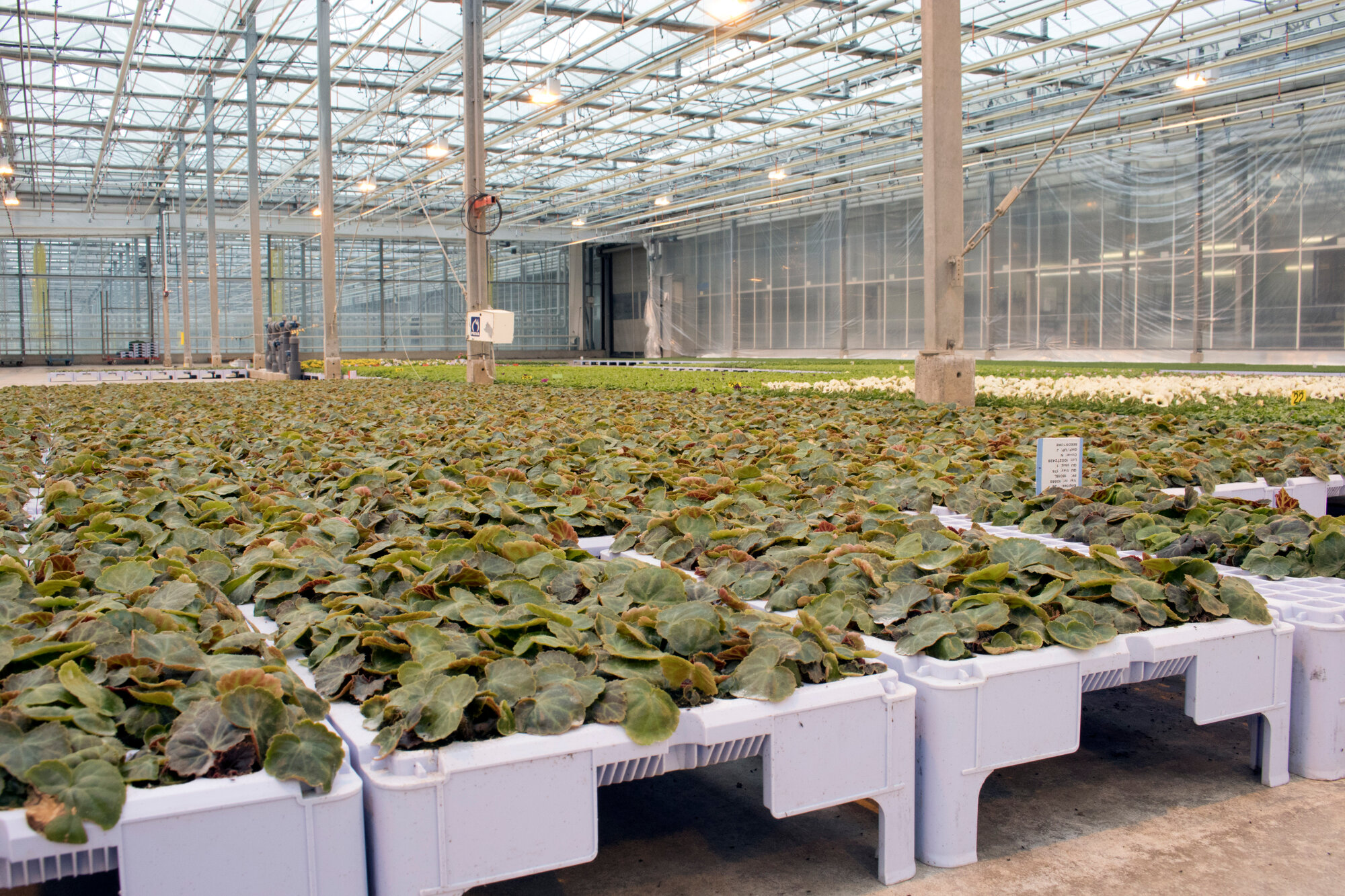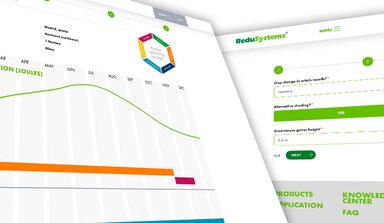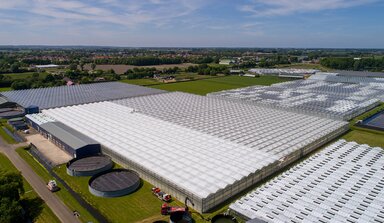Optimizing production
Vegetable and ornamental crops can produce much more than they do at present if the climate conditions are always ideal.
Horticultural crops can in theory produce much higher yields than they do at present – up to three or four times more, in fact, according to model calculations carried out by Wageningen UR in The Netherlands. The key lies in better control of climate conditions. In addition, researchers have been making great strides in better understanding photosynthesis in recent years. The crops of the future should therefore be much more productive.
For a crop to perform to the max, all the climate factors need to be consistently right. This is difficult to achieve, but it helps considerably if the factor that is limiting growth can be identified and improved.
If all the factors – temperature, light levels and nutrition – are perfect bar one, then that one factor will have a substantial impact on the crop’s yields. In PVC greenhouses, for example, ventilation often receives scant attention. On a nice sunny day, the light level, temperature and water supply may be right but the CO2 level will drop so far that the crop will never perform well. The first thing to do in that case is to let in more air from outdoors to rectify the CO2 deficit. Temperature could also be the limiting factor, something that can happen in both cold and hot weather.

Increasing production with coatings
In moderate climates the light level is very often a limiting factor. Scientists have calculated that tomato production per square meter in north-western Europe would be twice as high if the amount of light was constantly at summer levels.
Growers can do much to approximate this situation, not only by using assimilation lighting but also by ensuring that as much light as possible enters the greenhouse all the time, without this causing damage from heat or light stress. This is where coatings come in. AntiCondens and AntiReflect ensure better light ingress in winter, the time of year when light is always the limiting factor. In summer, ReduFuse, ReduFuse IR and ReduHeat help maximize light ingress without damaging the crop. This applies to fruiting vegetables and light-loving cut flowers, but also to many pot plants. There is growing evidence that even shade-tolerant plants appreciate more light, providing there is enough humidity and the temperature does not rise too high. With a diffuse coating you can avoid spots where the light is too intense, while a heat-resistant coating prevents heat stress.
For the crop to make optimum use of the light, there must always be sufficient leaf mass present. After all, any light that is not intercepted will be wasted. This happens quite quickly with young plants. Ideally the plants should be as close together as possible at every stage of the cycle without hindering each other’s growth, so that all the incoming light can be used in production.
The importance of consistently high CO2 levels has already been referred to above. This is particularly so in PVC greenhouses, but better CO2 management can also boost production in a glass greenhouse.
Finally, distribution of the sugars produced by the plant to its organs is also a factor. As much as possible needs to go to the parts that are harvested without this compromising future productive capacity. Recent research has shown that providing tomatoes with additional far-red light substantially increases production because more sugars go to the fruits.
Improving photosynthesis
By keeping their attention fixed on crop management, growers can move ever closer to the optimum situation. Meanwhile, breeders are working on varieties that deliver higher yields. There are also some interesting developments afoot in the field of photosynthesis. The rate of photosynthesis has traditionally been regarded as a given. A great deal of research went into improving this rate in the 1980s, but without success.
These days, however, we have a much better understanding of the genes that control the process and it has also been discovered that many subprocesses do not work as efficiently as they could. At the same time, there are natural variations in this efficiency. Researchers are selecting for this trait and are therefore helping to gradually speed up photosynthesis. Each subprocess improves by just one or two percent, but it all adds up to substantial progress.
A good example concerns the fact that plants have a delayed reaction to changing light intensities. If a plant is suddenly exposed to too much light – for example, in a sunny spot in the greenhouse – it temporarily shuts down its photosynthesis processes to prevent damage. It then takes a while for photosynthesis to resume. This excessive protection is unnecessary in the greenhouse, so breeders are working on plants that suppress their defense mechanism more quickly. In the meantime, it is a good idea to avoid sunny spots by using a diffuse roof or coating.

